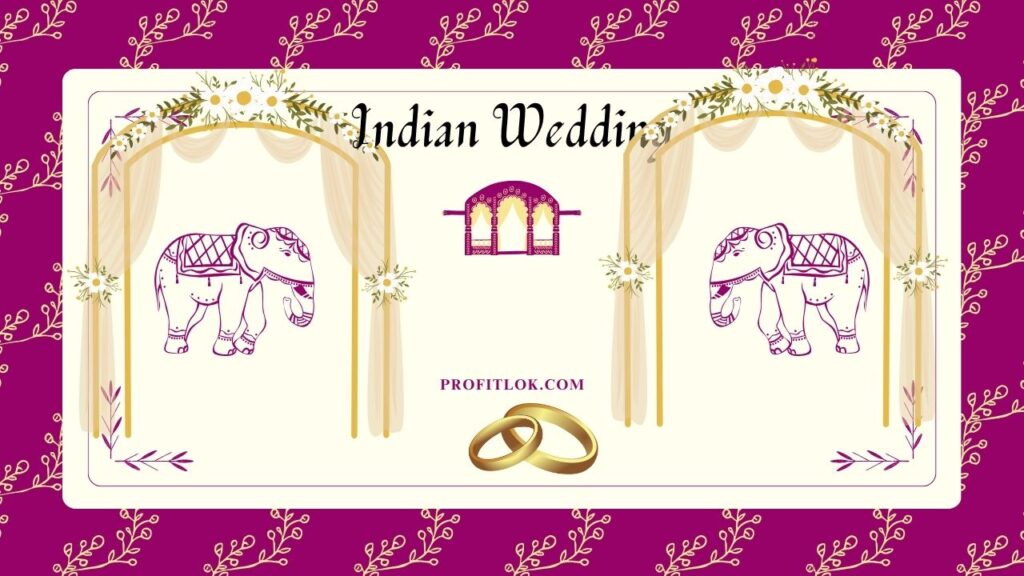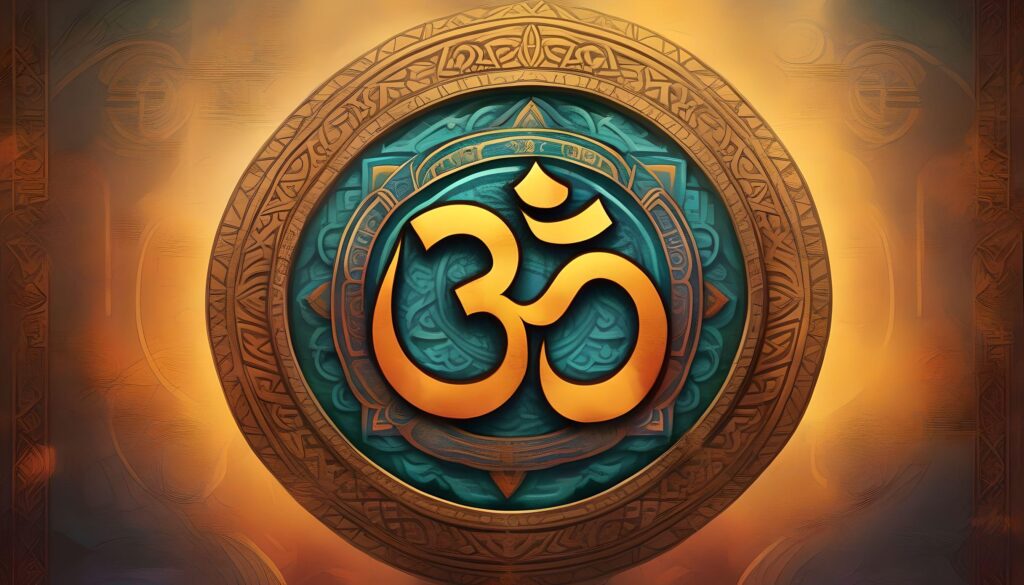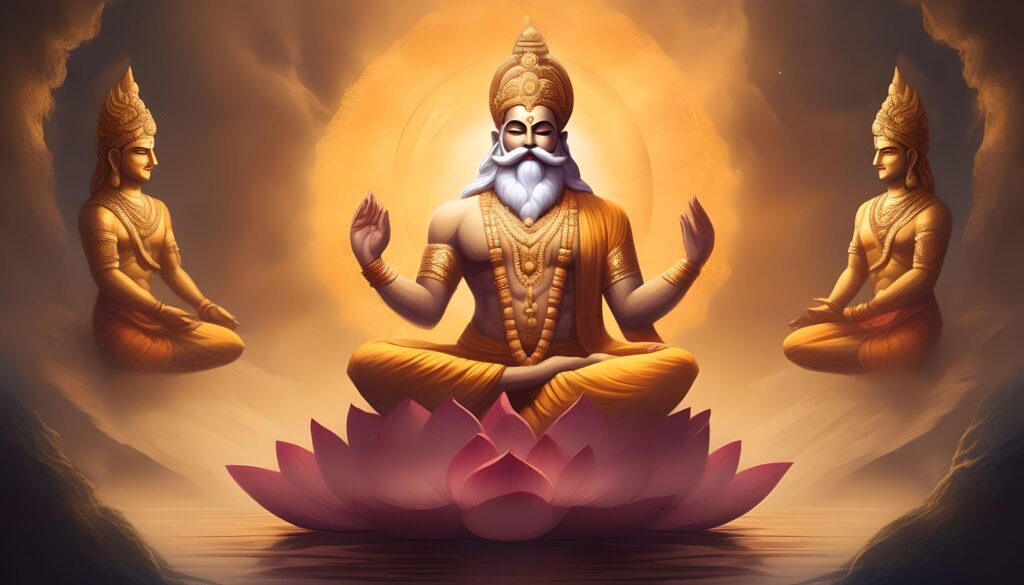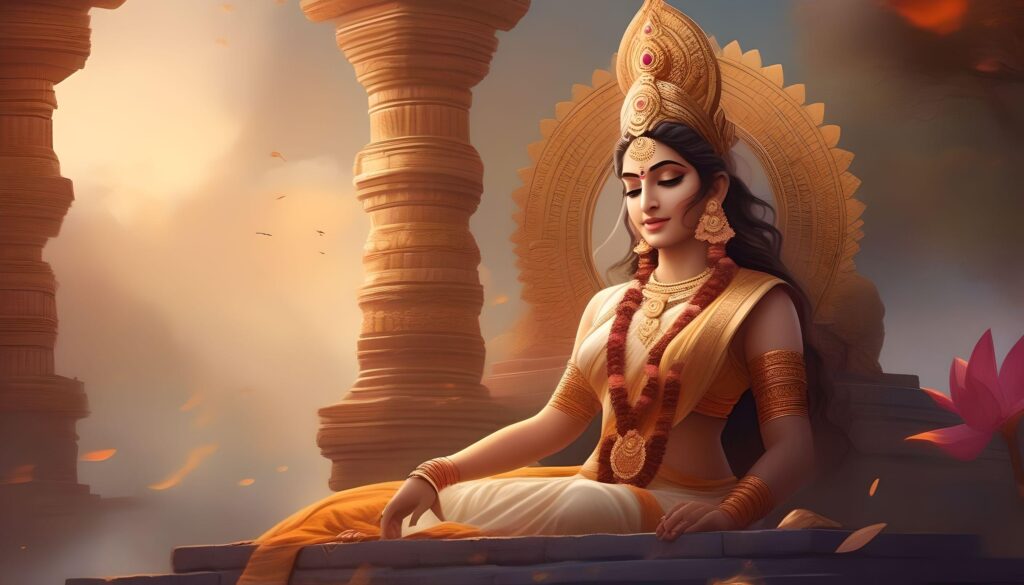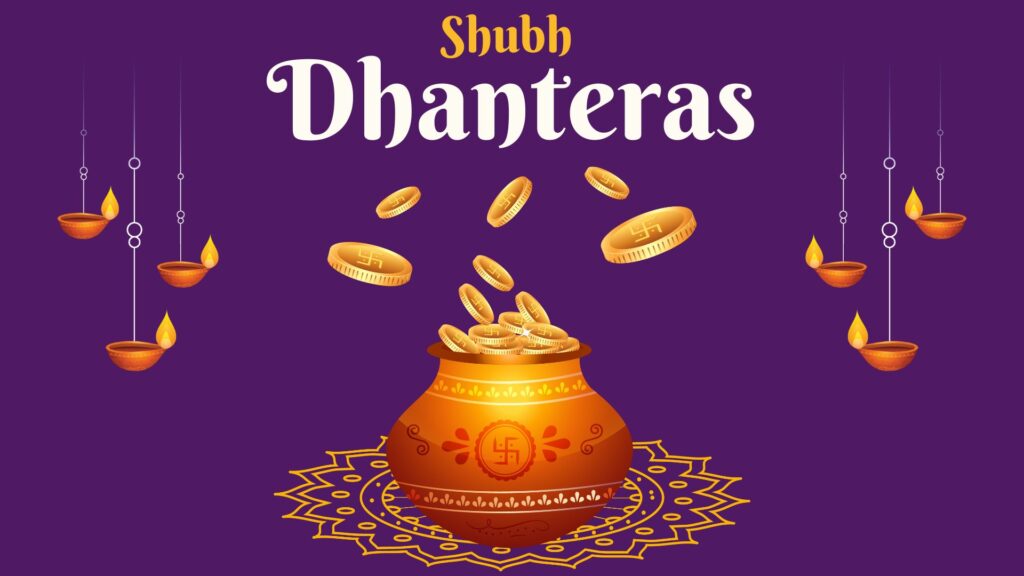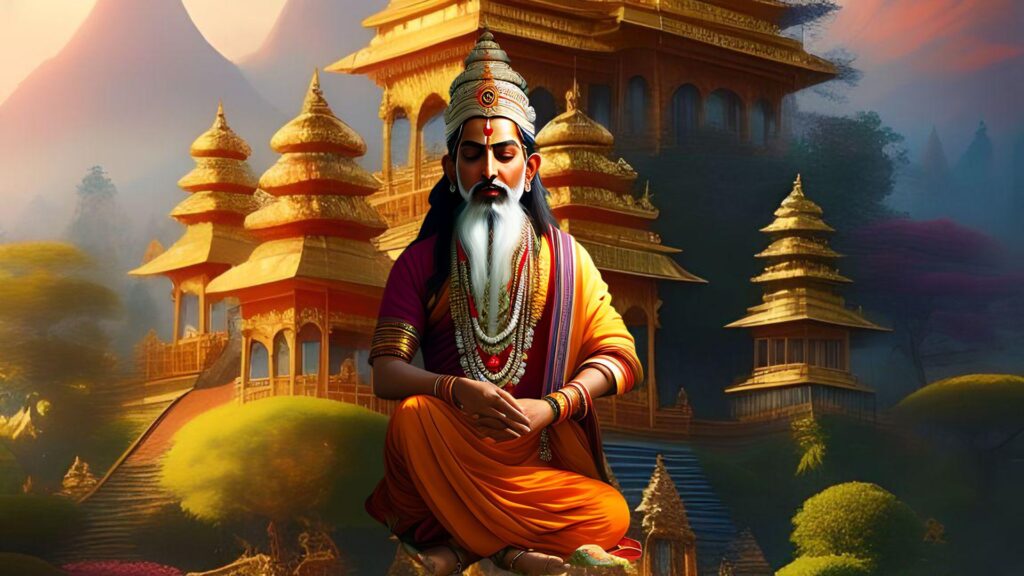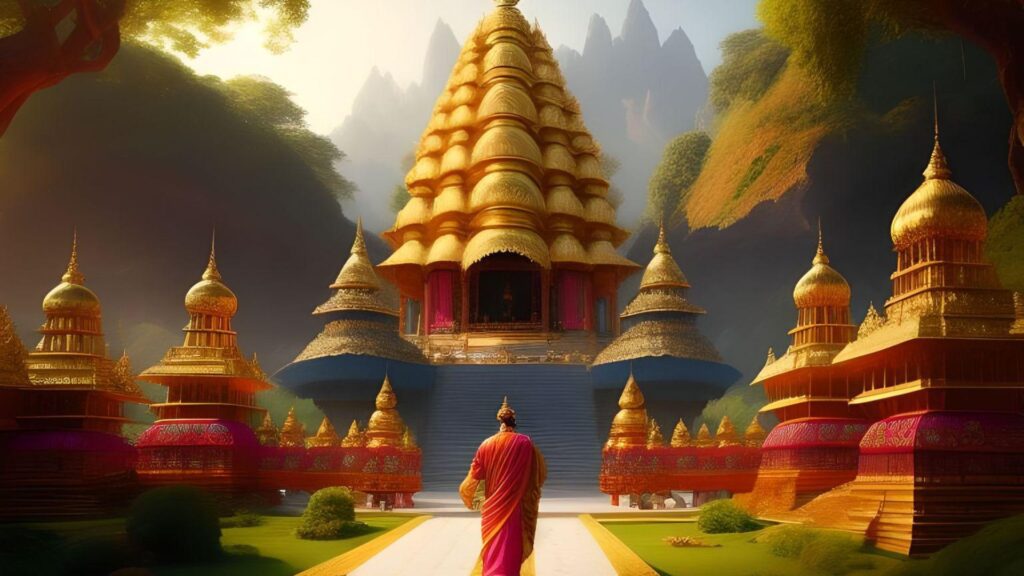An Introduction to the Sacred Rituals of the Hindu Wedding. Traditions & Festivities: Weddings occupy a significant cultural position, and this holds true for Hindu weddings as well. The opulent and elaborate festivities are replete with illustrious customs that mirror the couple and their families’ spiritual and cultural principles. Hindu matrimonial unions two spirits for an eternal period of time, encompassing the elaborate wedding ceremony, pre-wedding rituals, and exuberant reception. This exhaustive guide aims to delve into the intriguing realm of Hindu wedding traditions, elucidate on their significance, and delish over the rituals that imbue these festivities with genuine originality.
Understanding the Significance of a Hindu Wedding
Marriages are revered and sacrosanct in Hinduism; they are said to be celestial unions with a seven-lifetime duration. Weddings in Hinduism symbolize the passageway for an individual into the “Garhasthyaashram,” the second stage of existence. Weddings are momentous occasions that accomplish a man’s obligation to his forebears by guaranteeing the perpetuation of his family’s lineage via offspring. The Hindu wedding ceremony is a remarkable occasion due to the profound philosophical and spiritual significance attributed to each custom and practice.
Preparing for a Hindu Wedding: Planning and Invitations
Hindu matrimonial ceremonies necessitate thorough and methodical preparation and organization. Beginning the process is the selection of an appropriate engagement location, which is frequently reserved in advance due to its high demand. Planning should commence a minimum of six months prior to the wedding date in order to prevent any potential disappointment. This provides sufficient time for logistical coordination, including that of music, catering, transportation, and decorations. Hindu nuptials are momentous occasions, and it is customary to extend invitations to close friends and extended family members so that they may partake in the festivity.
Dressing for the Occasion: Attire and Etiquette
Spectating on a Hindu wedding presents an occasion to don traditional attire and vibrant hues. Although Western formal attire is permitted, attendees are encouraged to don traditional Indian garments in order to fully engage in the cultural experience. Feminine attire may consist of a traditional sari or a shawl-adorned jewel-tone dress, whereas male attire may consist of sherwanis, suits, or Kurta pajamas. Guests are encouraged to dress with audacity and sophistication in honor of the union of two spirits, as Hindu weddings are visual feasts.
The Days Leading Up to the Wedding: Rituals and Ceremonies
Hindu weddings are not confined to a single day; they encompass a series of rituals and ceremonies that span several days. Each day is filled with joy, anticipation, and spiritual significance. Let us delve into the various rituals and ceremonies that pave the way for the grand wedding celebration:
Day 1: Ganesh Puja and Mendhi Night/Sangeet
The wedding festivities commence with the Ganesh Puja, an auspicious occasion attended by the couple, the bridal party, and kinship companions who congregate to beseech Lord Ganesh for favors. As the signifier of good fortune and the remover of obstacles, Lord Ganesh is held in high regard. This ceremony establishes the foundation for the subsequent wedding rites. Subsequent to the Ganesh Puja, the mehndi ceremony ensues, during which the newlywed and her female acquaintances and relatives are adorned with elaborate henna designs on their hands and feet. This exuberant event is complemented by lively music, vibrant dance, and festivities.
Day 2: Grah Shanti and Sathak/Mandvo Ceremony
The Grah Shanti ceremony is conducted on the second day in order to establish harmony and good fortune for the forthcoming nuptials. This ceremonial event entails the performance of prayers and rituals within the couple’s residence, with the presence of close family members and the bridal party. There is a belief that conferring prosperity and happiness upon a couple’s union can be achieved by petitioning the deities for their favors. An additional noteworthy observance carried out on this day is the Sathak/Mandvo ceremony. The ceremony consists of a formal proclamation of the wedding date and the exchange of gifts.
Day 3: The Wedding Celebration
The primary wedding ceremony and the culmination of the wedding festivities occur on the third day. In this discourse, we shall examine the manifold rituals and ceremonies that transpire on this pivotal day:
Baraat/Jaan: The Groom’s Arrival Celebration
Baraat or Jaan refers to the elaborate procession through which the groom and his retinue enter the wedding venue. This procession consists of dancing, music, and general exuberance; it is an ebullient celebration. The ecstatic procession is accompanied by dear friends and family of the groom, who extend cordial greetings to him.
Varapooja: Welcoming the Groom
Varapooja is a traditional ceremony in which the family of the bride extends a warm greeting to the groom and his family prior to the start of the wedding ceremony. The groom is revered as Lord Vishnu during this ceremony, and the bride’s parents bestow their blessings and reverence by washing his feet.
Kanya Aagman: The Arrival of the Bride
The moment of great anticipation occurs when the bride, accompanied by her brothers or uncles, makes her grand entrance. This ceremony, referred to as Kanya Aagman, represents the bride’s family presenting her. The ceremony commences with the betrothed grasping the hands of the bride, which signifies the transfer of duty and the start of a fresh phase in the bride’s life.
Granthibandan and Varmala: Tying the Sacred Thread and Exchanging Garlands
The end of the groom’s scarf is affixed to the end of the bride’s sari pallu during the Granthibandhan ceremony, thereby establishing a sacrosanct connection between the couple. This action represents the enduring bond and eternal connection that they share. In observance of the Granthibandhan, the couple exchanges Varmala, which are garlands, as an expression of affection and acceptance.
Kanyadan: The Giving Away of the Bride
Kanyadan is among the holiest ceremonies performed at Hindu weddings. During this formal event, the parents of the bride present their daughter to the betrothed, thereby recognizing his duty to safeguard and provide for her. The hand of the bride is extended from the father to the husband, signifying the transfer of guardianship.
Havan: The Sacred Fire Ceremony
The Havan is a priestly-led ceremony involving sacred flames. In earnest, the couple and their families engage in devotional supplications and burnishing offerings in an effort to obtain divine favor. The fire is regarded as a witness to the matrimonial union, representing the couple’s sacred connection and the everlasting quality of their partnership.
Mangal Fera: The Seven Sacred Vows
The Mangal Fera is the focal point of the Hindu nuptials. Seven times around the sacred fire, the couple exchanges sacred vows as each revolution signifies a different commitment. These vows comprise assurances of affection, reliance, reciprocal regard, and an enduring dedication to each other.
Saptapadi: The Seven Steps
Following the Mangal Fera, the Saptapadi ceremony consists of the couple taking seven strides together. Each successive action signifies a mutual objective and a commitment to fulfill the duties and obligations of the marital union. As they proceed together, the couple reinforces their marital connection through the demonstration of their reciprocal affection and dedication.
Sindur and Mangal Sutra: Symbolizing Marital Status
The betrothed proceeds to embellish the parting of the bride’s hair with Sindur (vermilion) subsequent to the conclusion of the Saptapadi. This ceremonial practice denotes her entry into matrimony and serves as an emblem of the groom’s enduring devotion and affection for his spouse. The Mangal Sutra, a sacrosanct necklace, is also bestowed by the groom upon the bride, symbolizing their matrimonial union and elevated social standing.
Akhand Saubhagyavati: Blessings From Married Women
The couple is greeted by married women from both households, who extend their best wishes for a joyful and prosperous union. They bestow their blessings and support in the form of Akhand Saubhagyavati, a protective thread that is woven around the bride’s wrist.
Aashirwad: Seeking Blessings
The matrimonial ritual culminates in the exchange of sincere aspirations and the bestowal of blessings by the elders. The couple beseeches their parents, grandparents, and other esteemed relatives for their well-being and best wishes regarding a happy and prosperous married existence.
Vidaai: The Farewell Ceremony
The Vidaai ceremony signifies the bride’s heartfelt departure from the residence of her family. The bride, in appreciation for her parents’ love and support, tosses handfuls of rice and currency above her head as she departs to begin her new life with her spouse. This moment of profound emotion represents the bride’s assimilation into her new position as a spouse.
The Joyous Reception: Celebrating the Newlyweds
The couple and their families commemorate their union with a grand reception following the wedding ceremony. Guests may convey their happiness and extend their congratulations to the newlyweds at the reception. A vibrant event is characterized by lively music, dancing, and delectable cuisine. Typically, speeches, performances, and a sit-down dinner precede a night of dancing and revelry at the reception.
Conclusion: Embracing the Beauty of Hindu Wedding Traditions
Hindu matrimonial customs serve as a tangible manifestation of the profound spiritual principles and cultural legacy of the Indian subcontinent. Sacred rituals and festivities serve to unite families, fortify ties, and commemorate the sacred union of two spirits. Hindu nuptials are a sensory extravaganza and an enduring memory, characterized by the vibrant hues of the garments, the elaborate ceremonies, and the exuberant festivities. Through a comprehensive comprehension and wholehearted acceptance of these cultural customs, one can genuinely grasp the profundity and import of a Hindu matrimonial ceremony, as well as the affection that unifies two persons as they embark on their shared path.
